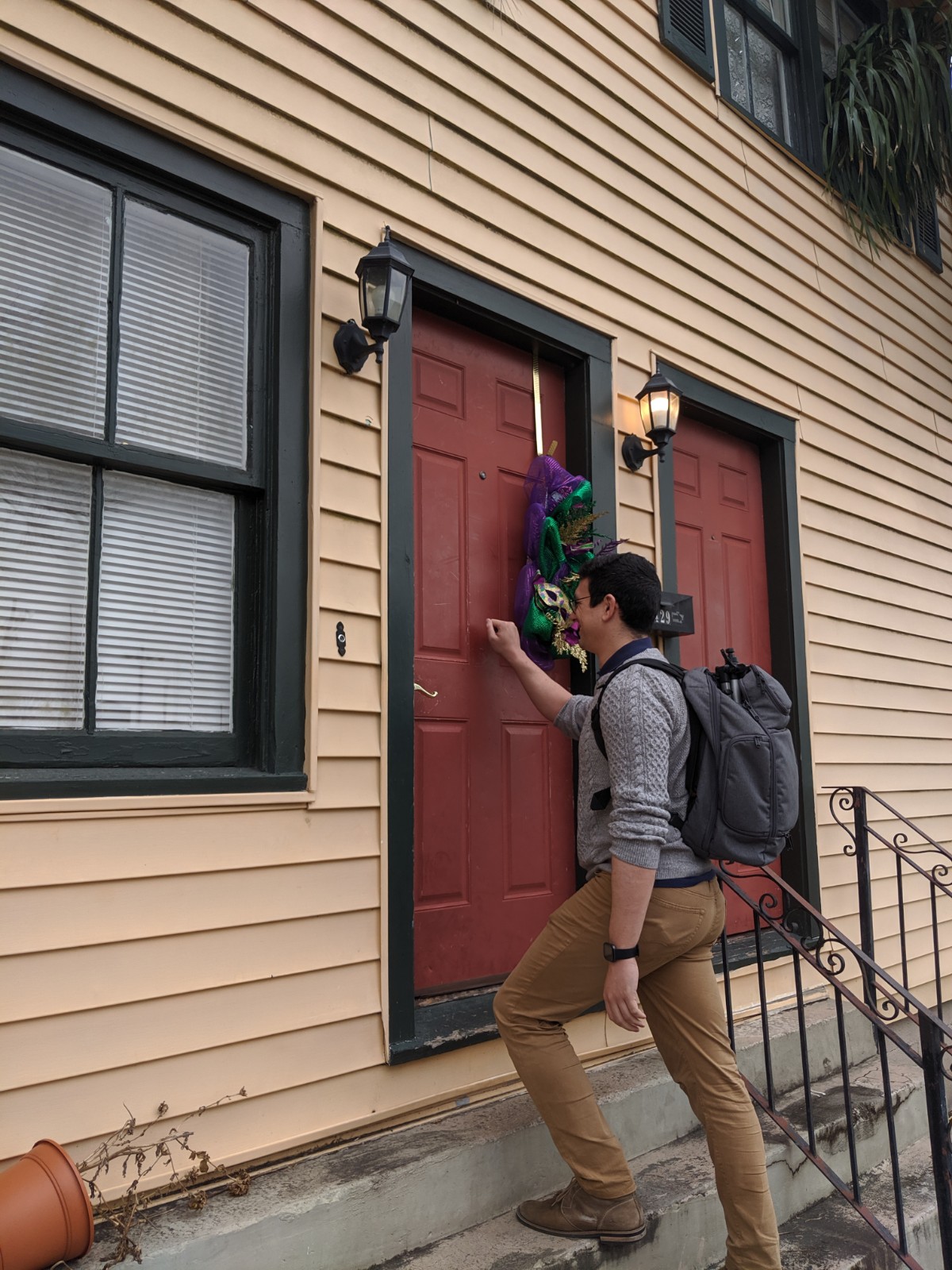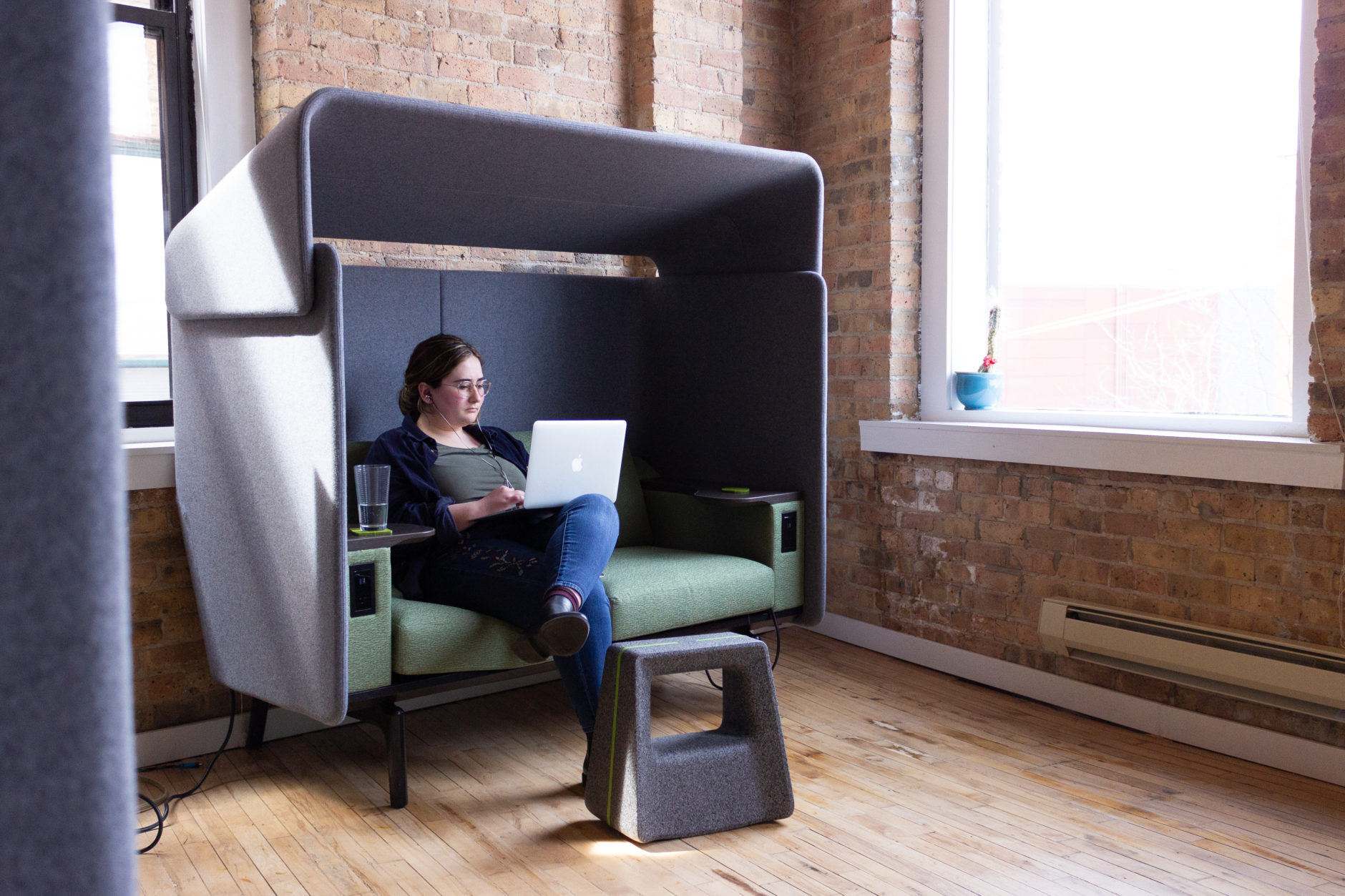
There are a lot of moving parts to keep track of with research, especially when you’re trying to observe users in-context. Fuzzy Math has a lot of experience doing in-context (aka ethnographic) research and has learned from experience what kinds of things can derail the process.
Between making sure your recording device has space, building rapport with participants, and respecting participants’ privacy, we have some main process points to make sure we minimize logistical issues and can focus on keeping the session running smoothly so we can collect the data we need.
Here are some tips and things to stay on top of to help make sure your ethnography runs smoothly.
Download the Ethnographic Research Checklist
Download the ChecklistDon’t miss a step!
Stay on top of your in-context ethnography with our step-by-step Ethnographic Research Checklist.
Before going into research
Making sure your sessions run smoothly is all about the prep work! Spending the time before you actually get on the road will spare you from a lot of stress and scrambling once you actually get to your research site.
Build time for human needs
Research sessions run best when the researchers are well-rested, well-fed, and minimally stressed or distracted. When scheduling, make sure you build in time for your needs as a human. In fact, aim to build in a little more time than needed between sessions to allow for things like meals, snacks, bathroom breaks, and potential traffic.
Build rapport with participants prior to showing up
This is fairly obvious, but it’s important to emphasize—your participant has to trust you enough to invite you into their home or workplace. While remote research might just involve reaching out and confirming someone’s schedule, for ethnographic research you might need to:
- Provide extra context around what you’re researching (without giving too much away if possible) and what kinds of data you’re trying to collect,
- Confirm what data you’re NOT trying to collect, especially if personal information isn’t important to your study,
- Prove that you’re a real person (links to company websites or LinkedIn pages could work here, as well as making sure whatever account you’re contacting them with includes a photo of yourself),
- Send them a copy of your consent form ahead of time so they know what they’re agreeing to and don’t feel blindsided the day-of.
Set your recording quality to a manageable size
On phones and cameras, often the default video recording quality will be set to the highest quality, meaning that video files will be large and fill up your storage quickly. Fix this by going into your device’s settings and picking something that’s lower-resolution to make sure you don’t run out of storage in the middle of a session.
Keep a portable power bank or a spare battery handy, and recharge your device between sessions
Video recordings are inherently power-hungry. If you’re out for a full day of sessions, it’s likely that your battery will die at some point throughout the day. Keeping a spare camera battery to swap out between sessions or an external power bank for your phone to charge up between (or even during) sessions will make sure you can make it from breakfast to dinner without any problems.
Make sure everyone on your team knows their roles for the session
Who’s asking questions? Who’s taking notes? Who’s responsible for setting up the recording device(s)? Who keeps track of consent forms or other physical artifacts? It’s useful to clarify all these things ahead of time to make sure nothing falls through the cracks.
Fuzzy Math typically has at least two people during every user interview session. One person “leads” the session by asking the majority of questions and keeping the conversation going while a second person takes notes and asks questions to fill in additional gaps when needed. Then, we alternate who takes on each role so nobody gets burnt out doing the same thing for too long. We try to divvy up other functions as well (e.g. handling consent forms, recording devices, etc) in a way that feels fair, which can change from project to project.

During research
Double up on recording formats, just in case
Ethnographic research puts us in unfamiliar and sometimes unusual environments, so it’s best to be prepared for the worst. As part of this preparation, we recommend taking a video recording on one device and an audio recording on another. This redundancy will be helpful in case anything goes wrong and one recording doesn’t work for a session.
In our experience, we’ve encountered several sessions (especially towards the beginning of a large research project when we were still working out the kinks) where our video recording would either run out of battery or out of storage and stop recording partway through the session. Having an audio recording saved us a lot of trouble when we wanted to go back later to reference those sessions.
When recording video, position your camera to capture the user’s body language, not their personal information on any screen or papers
This may vary depending on your context, but make sure to be aware of your participants’ surroundings when capturing video. Is your participant stationary at a desk or moving around? Is there any personal information you can see that you don’t specifically need for research (like health information) or personally identifiable information (like addresses, phone numbers, or social security numbers)? If you don’t specifically need those details, try to make sure they’re not captured at all while still capturing as much relevant context and information from your participant.
For session leaders:
- Keep a pen and paper (or anything to take notes with) handy!
- You might not be responsible for the session’s full notes, but it’s always helpful to be able to jot down a few words if a participant says something interesting that you’d like to return to.
- You’re likely to go off-script pretty regularly (it’s really more of a guideline, anyway…), so practice how you ask questions.
- Like with all research, it’s best to avoid leading questions or questions with yes/no answers. In our day to day lives, we don’t tend to think twice about this, so it takes practice to make sure your sessions are as unbiased as possible.
- Pay attention to your participant’s surroundings and how they interact with them.
- This is the point of ethnography! Ask questions about how things are used, how things are helpful, and how they started using things to assist in what they’re doing.
For notetakers:
- Listen and take notes actively.
- Find a way to call out in your notes (italics, bold, or underline work well, as do asterisks) things that might make good quotes or things that you’d like to follow up on that the session leader may not catch, or even notes to yourself for things to think about or consider when synthesizing later.
- Write down timestamps periodically in your notes.
- In English, people talk on average over 120 words per minute, but the average typing speed is somewhere closer to 40 words per minute. It’s normal to not be able to keep up with everything happening during a user interview. If you struggle taking notes word-for-word, don’t type fast, or have a fast-talking participant, timestamps are helpful for going back through recordings later so you can match your notes to particular points in the conversation. They also allow you to note particular quotes that you think might be useful to refer back to later on.

After research
Transfer recording files at the end of every day
Once again, this is trying to make sure you don’t run out of storage. Transfer recordings from your phone and/or camera to your computer or hard drive at the end of every day and delete the files from your recording device to make room for the next day. If you have several very long sessions, it may be worth checking your storage between sessions to make sure you’re not filling up faster than expected.
Note: Some phones have a “recently deleted” folder that keeps files around even after you think you’ve deleted it. Check to see if that folder exists and make sure your files are completely erased. It never hurts to double-check how much free space your storage has afterward.
After going through a few ethnographic research sessions this process will likely start to become second nature. However, we’ve created a condensed version of this checklist that you can save, fill in, and print out for yourself just to be sure you’re fully prepared for every session. Download it below!
Download the Ethnographic Research Checklist
Download the ChecklistDon’t miss a step!
Stay on top of your in-context ethnography with our step-by-step Ethnographic Research Checklist.
Have a project in need of user experience design, strategy, and research?
Get in touch with us to get a UX consultation.